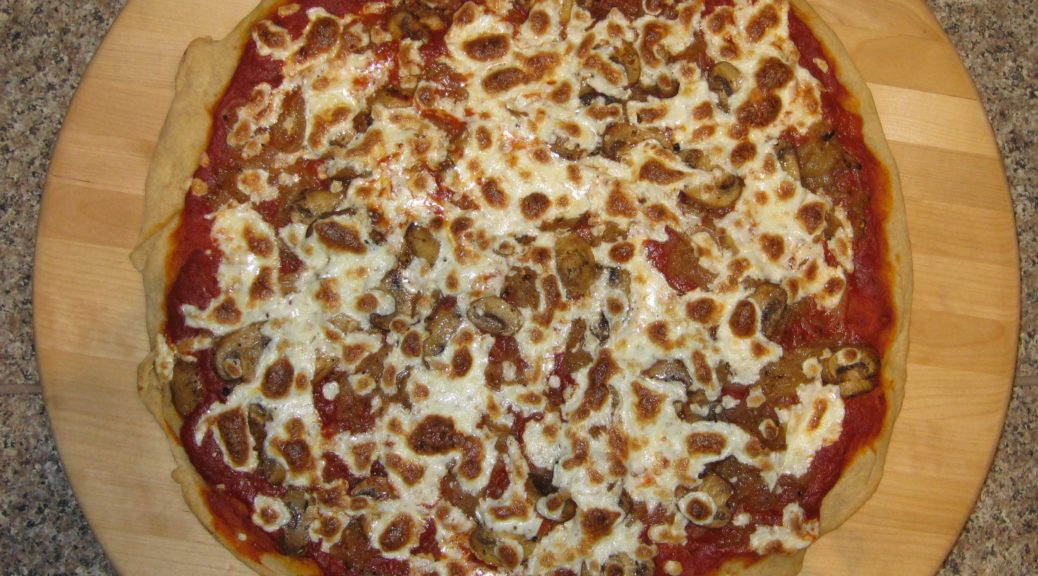June 26, 2017
Before my bread machine it was my Kitchen Aid stand mixer. Before my Kitchen Aid stand mixer it was my hands. I have always enjoyed making bread.
Junior year in college was when my bead making got started in earnest. That was the year that I lived in the International Residence Project at the University of Pennsylvania. I was notified of my acceptance into the Project, a College House arrangement that occupied two floors of a high-rise dorm, late in my sophomore year. Current and incoming residents of the Project met at a social event where I was introduced to the roommate to whom I had been assigned for the coming school year, Ray Hugh from Georgetown, Guyana.
Ray and I started hanging out together for the last part of sophomore year and found that we really hit it off. Since we were both staying in Philadelphia for the summer, and since students could not stay in undergraduate dorms during the summer, we did what most undergrads did during the summer. We sublet an apartment in Graduate Towers from graduate students who were not staying in Philadelphia for the summer but who, as graduate students, had year-long leases.
I had pretty regular hours working in a research lab for the summer but that left evenings and weekends free to explore cooking which Ray and I did together. It quickly became clear that the kitchen in our apartment in the International Residence Project, which we would begin occupying in September, was going to need an upgrade.
At my request, my father made a five-foot long kitchen counter with a laminate top. There was in integrated pull-out table that would seat two in the regular configuration but four when pulled out. That counter became the epicenter of our cooking universe. Set opposite the Pullman kitchen (three electric burners, an oven, an under-counter refrigerator, and an integrated sink) we had a very efficient kitchen set-up. A deep shelving unit that I made housed equipment and several stacks of plastic milk crates held ingredients for which there otherwise would have been no space.
I made bread on that counter every week, kneading it by hand.
I made bread the way my Italian grandmother did. Flour, water, salt, and yeast went into a big bowl. The yeast was not proofed. I mixed the ingredients by hand, adding more flour as needed. Periodically I would rub the inside of the bowl with lard. After enough flour had been added, I would put the dough on the counter and knead it for about ten minutes. The dough would always rise twice, getting punched down and kneaded lightly after each rise, before being put in bread pans for the third and final rise before being baked.
Decades later I got my first Kitchen Aid stand mixer and started using that to make bread. Good thing, too, because I was starting to have trouble with my joints from all the kneading necessary.
A few years ago I got my first bread machine, a Zojirushi BB-PAC20. While I have no doubt that bread baked in an oven is better I also have no doubt that we would not eat anywhere as much homemade bread if I had to do all the mixing, rising, shaping, and baking unaided.
With less than five minutes’ work spent measuring ingredients, I can push a button and have bread a few hours later. And I am completely at peace with the ingredients in my bread. No sugar. No high fructose corn syrup. No dough conditioners. No preservatives. Nothing but flour, water, salt, olive oil and yeast! The bread machine has more than paid for itself in savings.
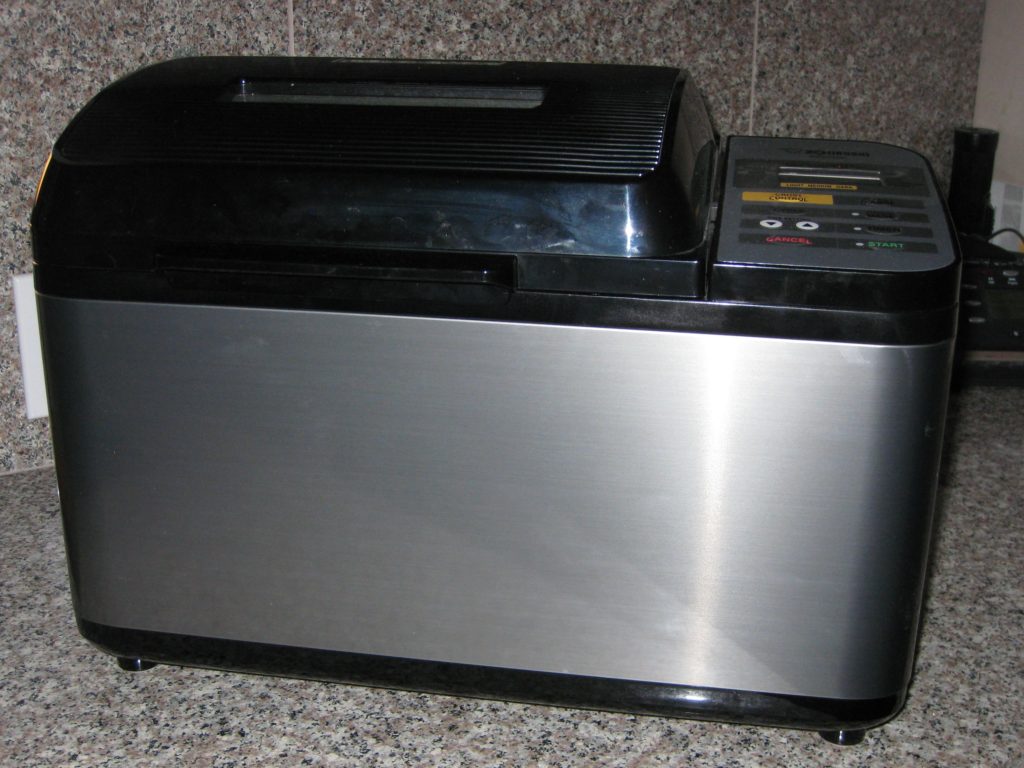
I especially like the dough cycle. As noted in a previous blog post, I use the dough cycle to make the dough for my focaccia. A quick final rise after being shaped and the focaccia is ready for the oven. The dough cycle also makes pizza dough in a snap. I like to make it at least one day in advance and allow it to rise in the refrigerator. Two days in advance is even better.
I still pretty much use the same recipe for bread dough that I followed in college though I’ve swapped out the lard for olive oil and modified the directions to suit mechanization instead of hands. (Every now and then, I just get the urge to do it by hand, though!)
Usually I bake pizza in a wood-burning oven. Since wood-burning ovens are not very common, the pizza featured in this post was baked in a conventional oven. I don’t have a pizza stone since I don’t usually bake pizza in the oven. All the better though, since I know few people who have pizza stones. I simply went old school and used heavy aluminum pizza pans. I didn’t even use the convection feature!
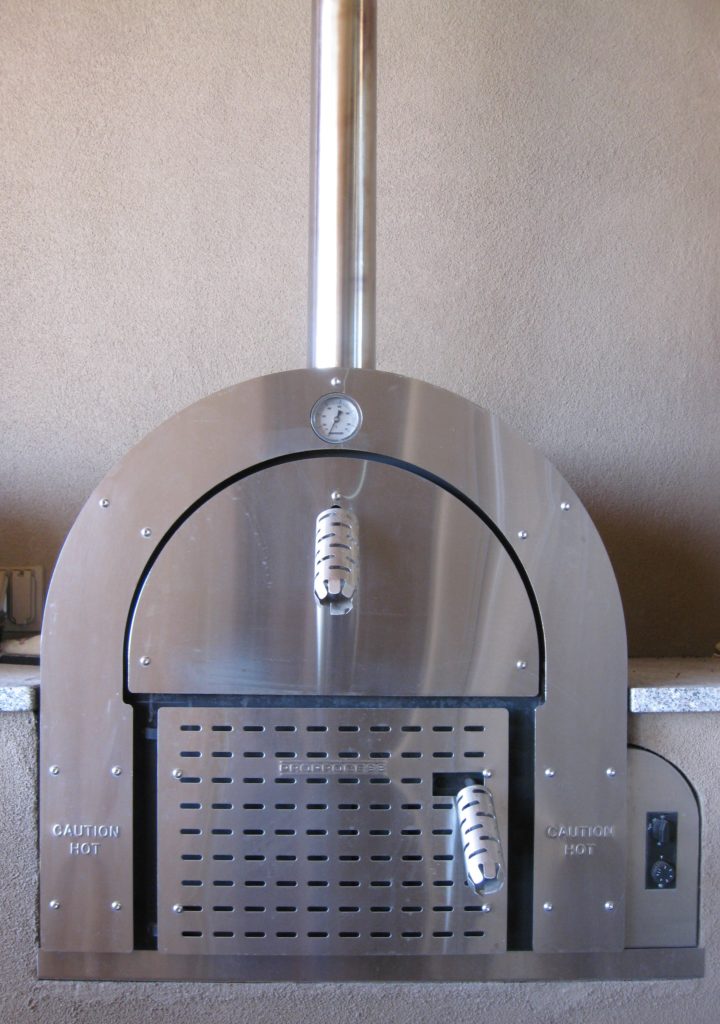
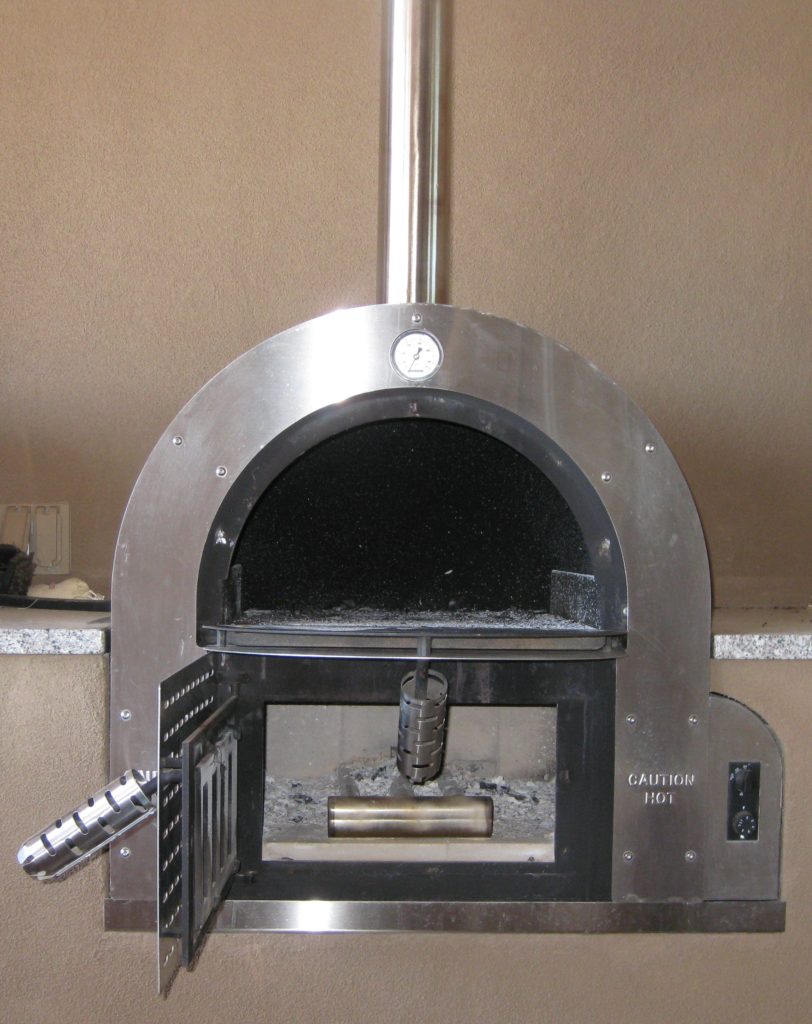
Until a few years ago I always cooked my pizza sauce. Then I tried uncooked sauce as is often done in Naples and found that I really prefer it. It has a fresher taste and it is really easy to make. (Sorry mom!)
I usually use tomato puree because I like a smooth sauce but crushed tomatoes work well if you prefer a chunkier sauce. You can also just whizz a can of whole peeled tomatoes in the blender or food processor to whatever degree of chunkiness or smoothness you want.
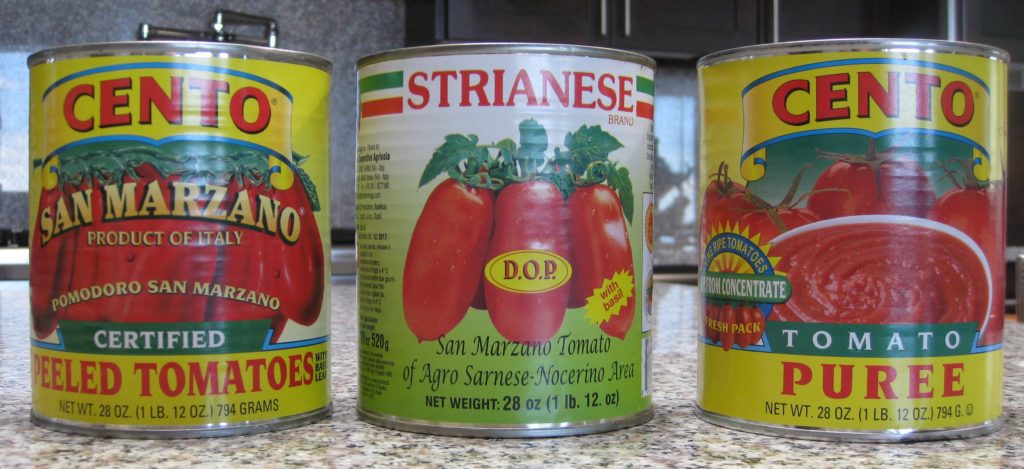
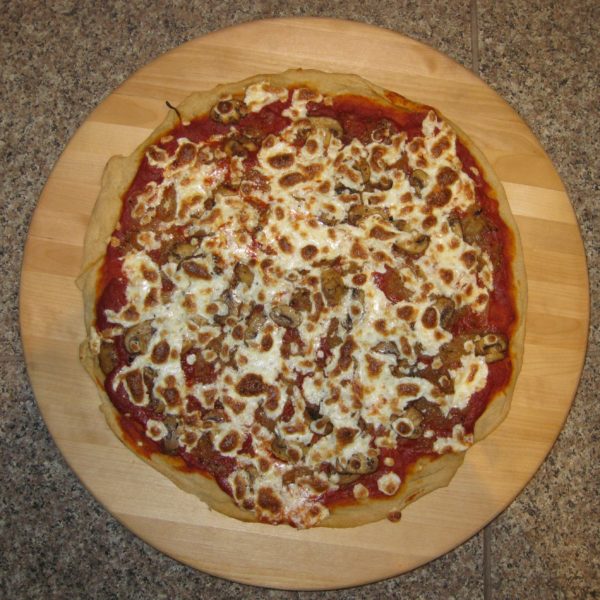
| Prep Time | 40 minutes |
| Cook Time | 15 minutes (for each) |
| Passive Time | 24 hours |
| Servings |
pizzas
|
- 545 g bread flour approximately 4½ cups
- 350 ml water approximately 1½ cups less one tablespoon
- 2 teaspoons salt
- 35 ml olive oil approximately 3 tablespoons plus 1 teaspoon
- 2 teaspoons active dry yeast or one envelope
- 1 28 ounce can tomato puree or crushed tomatoes depending on preference for texture
- 3-5 cloves garlic minced (depending on size and personal preference)
- 1 teaspoon dry oregano
- 1-2 teaspoons salt depending on saltiness of the tomato product.
- Olive oil for the pan
- 6 ounces fresh mozzarella
- Toppings of your choice
- 1 ball of dough
- 1 cup (scant) pizza sauce
Ingredients
Pizza Dough
Pizza Sauce
Assembly of Pizza
|

|
- One or two days before you plan to bake the pizza, prepare the dough.
- You can use the dough cycle of a bread machine, the dough hook of a stand mixer, or you can make the dough by hand following the directions in the blog post.
- If using a bread machine, follow the manufacturer’s directions for the dough cycle.
- If using a stand mixer, put warm, not hot, water in the bowl of the mixer. Add four cups of flour, the yeast, and salt and begin to mix. Gradually pour in the olive oil. Add enough of the remaining flour to make a slightly tacky dough. Chances are you will need all of it. Allow the dough hook to knead the dough for 8-10 minutes.
- If making the dough by mixer or hand, oil the dough and place in an oiled bowl. Allow the dough to rise at room temperature until doubled in bulk, covered lightly with a kitchen towel.
- After the dough has doubled, or when the bread machine has completed the dough cycle, remove the dough and punch it down.
- Divide the dough in half and shape into two balls. Rub the surface of each ball with oil and put each one into a separate oiled bowl or LARGE plastic container.
- Cover tightly using plastic wrap if needed.
- Put the dough in the refrigerator until the morning of the day you plan to bake the pizza.
- On baking day, remove the dough from the refrigerator in the morning and allow it to sit at room temperature until doubled in bulk. This will take 3-5 hours (or maybe a bit longer if your refrigerator is really cold). If you are not ready to bake the pizza, just punch the dough down again and let it rest. It is better to err on the side of taking it out of the refrigerator too early rather than too late!
- Mince the garlic.
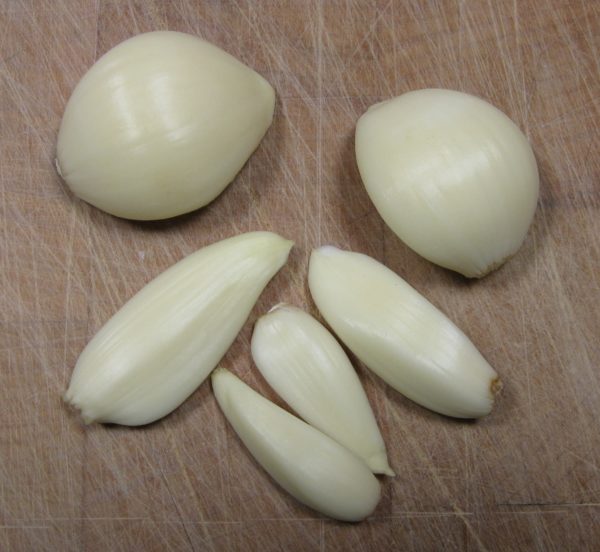
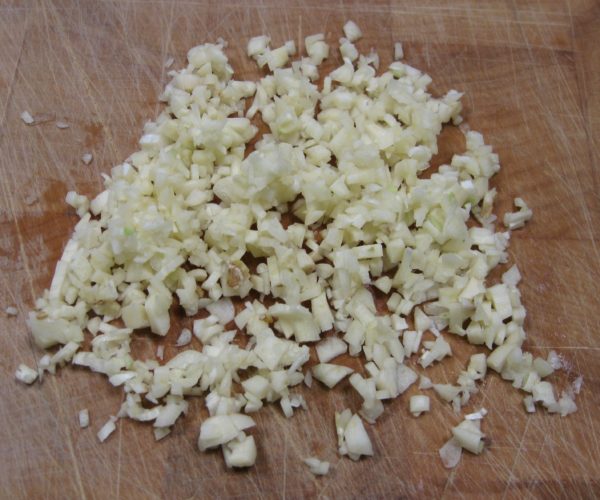
- Combine all the ingredients for the sauce.
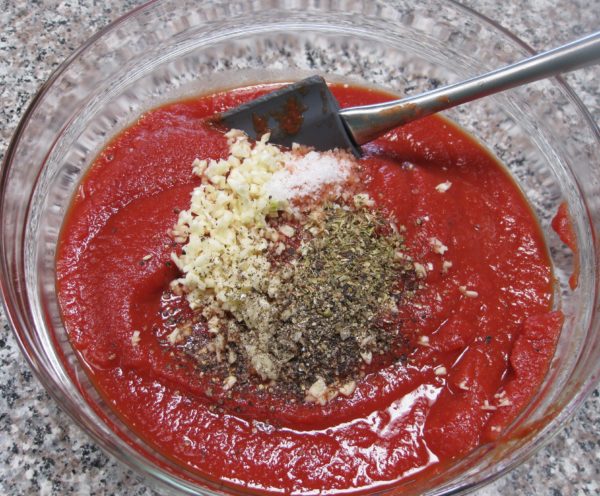
- Cover and refrigerate overnight to allow the flavors to mellow.
- Some brands of tomatoes can be a bit tart. Taste the sauce right before you use it and, if necessary, add up to ½ teaspoon of sugar but no more. (Some people consider this heresy but it is a common Italian technique to counter tomatoes that are too tart. Remember agricultural products vary and sometimes you need to use your judgment to correct a situation that is not addressed by the recipe.)
- Shred the mozzarella on the tear-drop shaped holes of a box grater. Reserve.
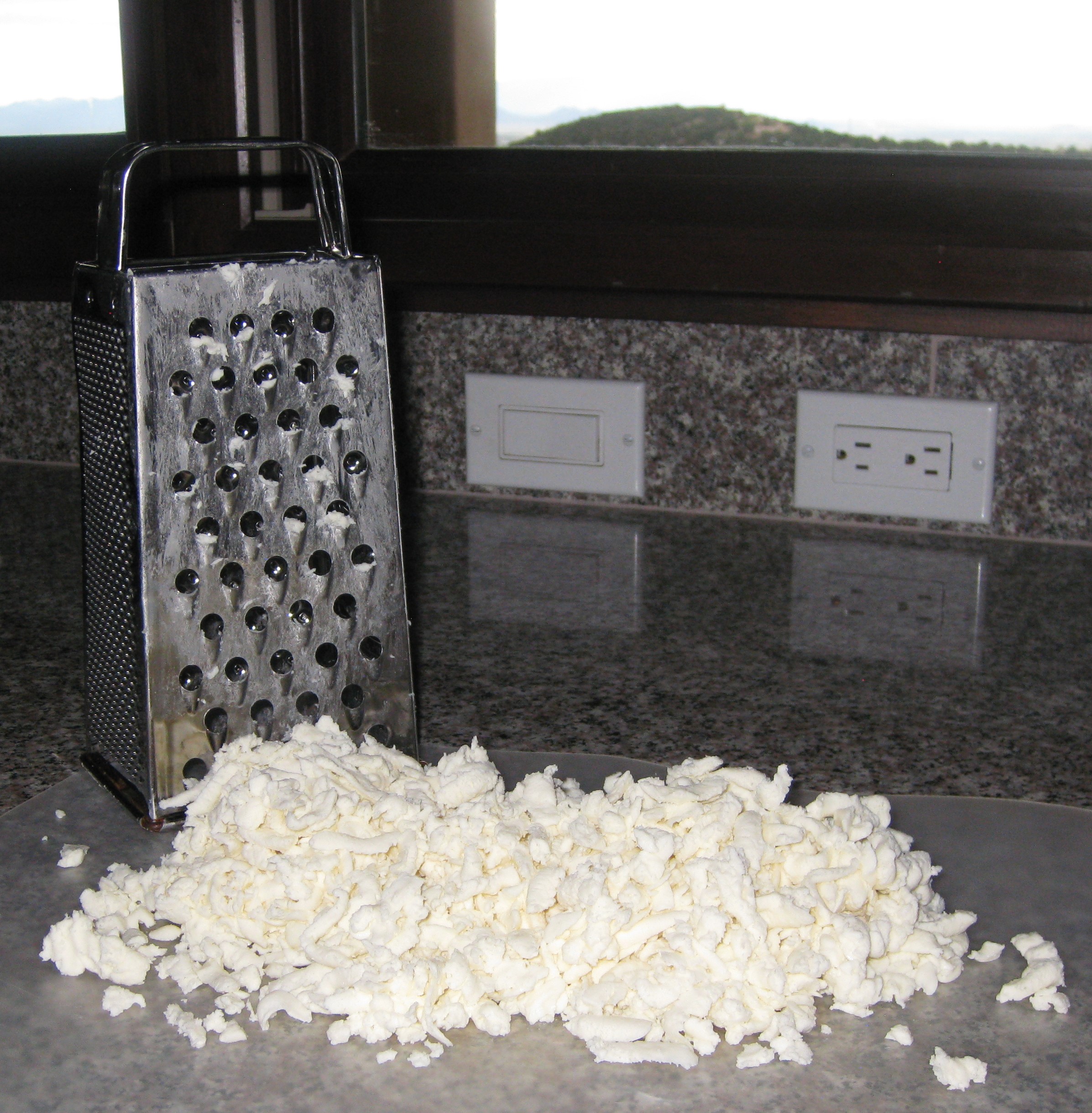
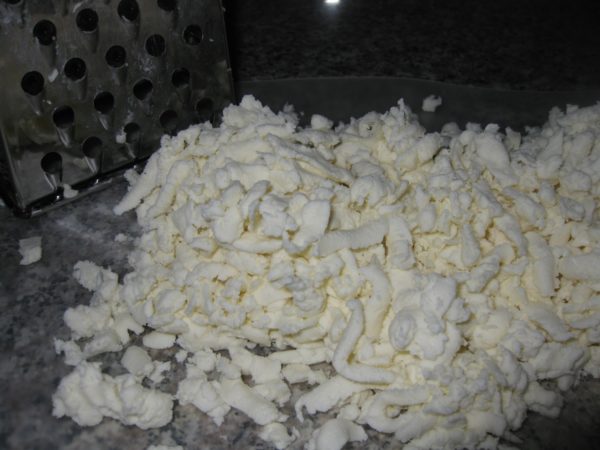
- Lightly dust a 16 inch round pizza pan with cornmeal.
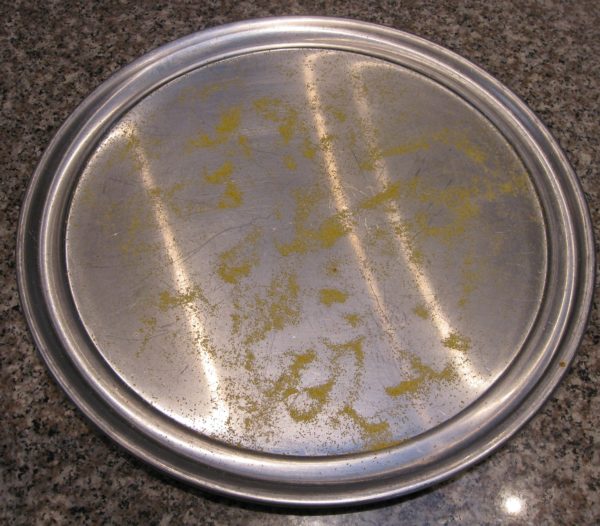
- Put the dough on a metal pastry "board" or a second pizza pan and gently stretch it by pressing on it and moving your hands apart. The dough will spring back. Each time it will stay stretched a little more. After six to eight stretching motions, allow the dough to rest for several minutes to permit the gluten to relax. This will make it easier to stretch. I usually allow two or three such rest periods.
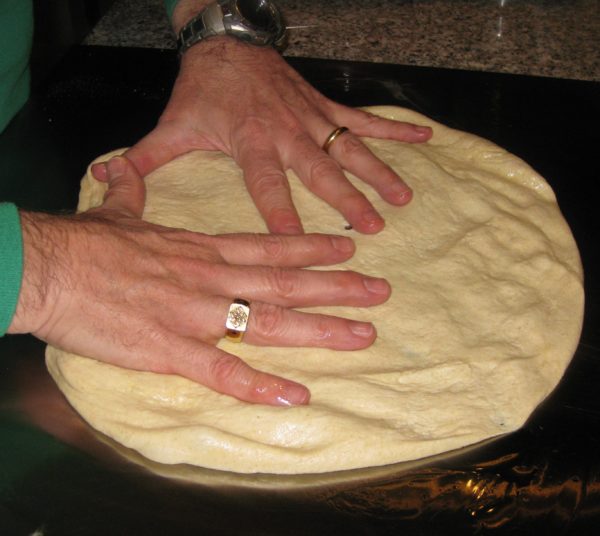
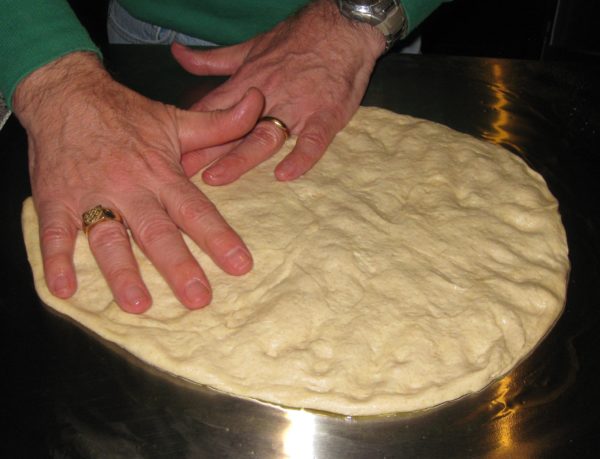
- Stretch dough into a 16” round.
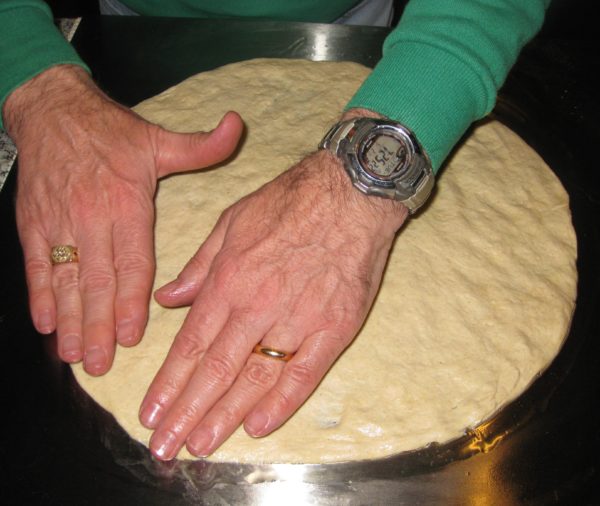
- Flip the dough over onto the cornmeal-dusted pizza pan. (OK, I don't have the skill to stretch the dough by tossing it in the air and putting it on the pan so this is my hack. If you can toss pizza dough in the air, please give me a lesson!)
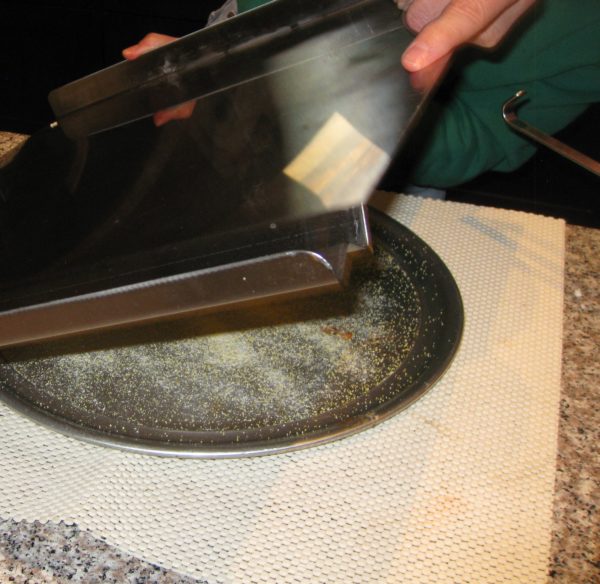
- Spread the sauce on dough to within one inch of the edge.
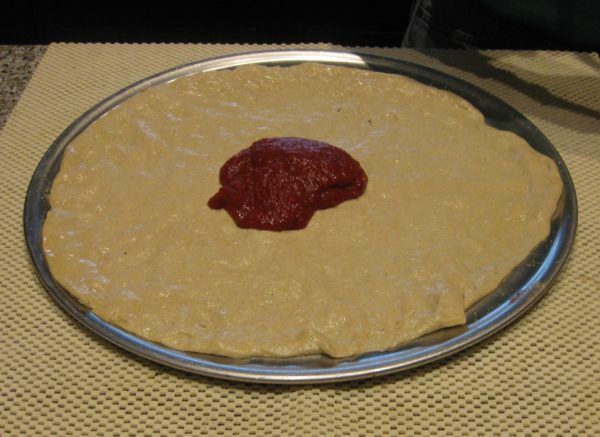
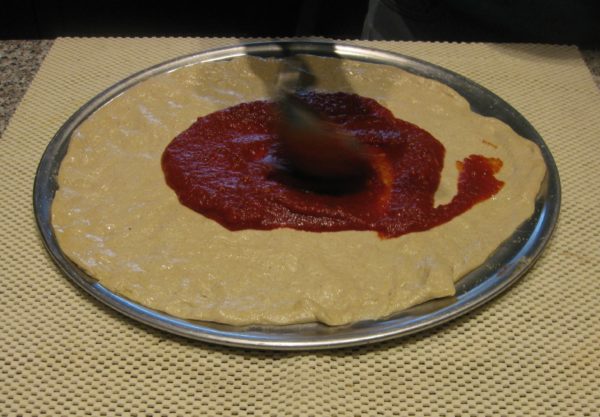
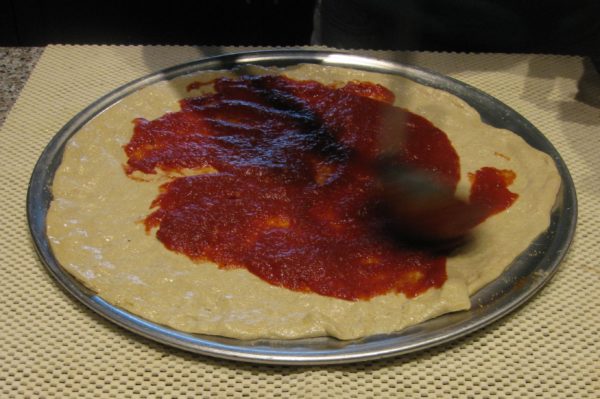
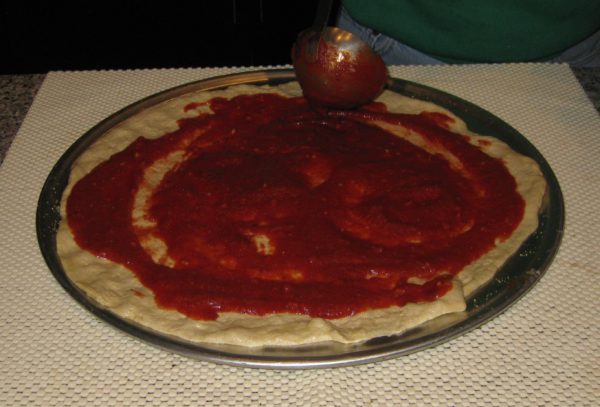
- Add toppings of your choice, if desired.
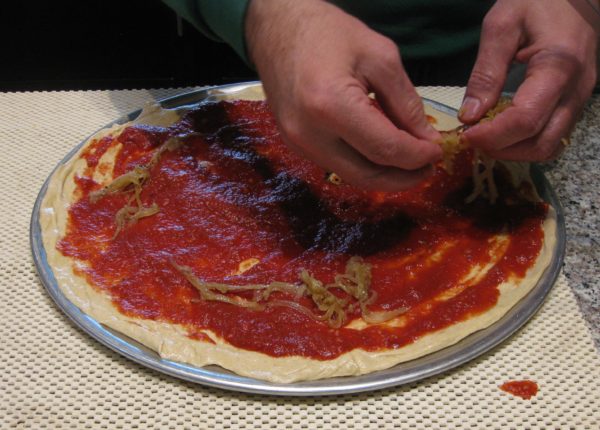
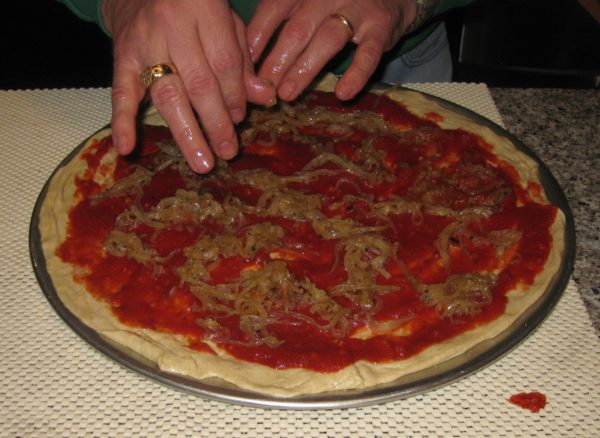
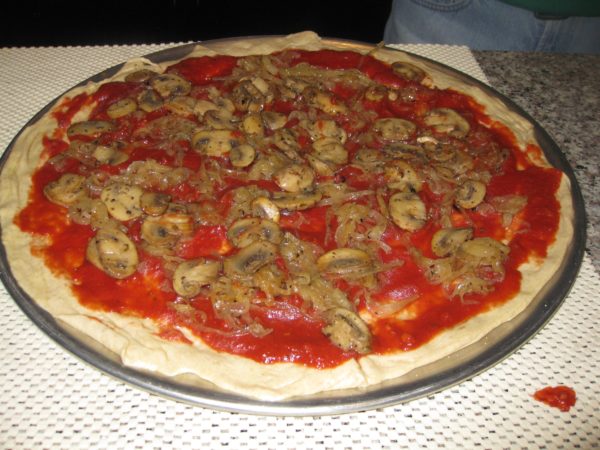
- Evenly sprinkle with shredded mozzarella.
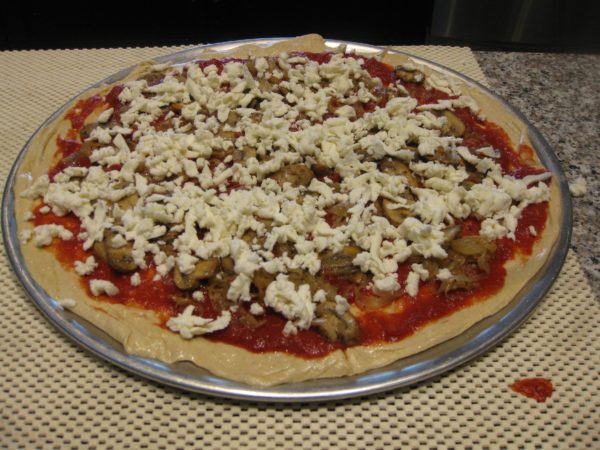
- Bake the pizza at approximately 450°F until the edges are golden brown and the dough is fully cooked, approximately 12-15 minutes.
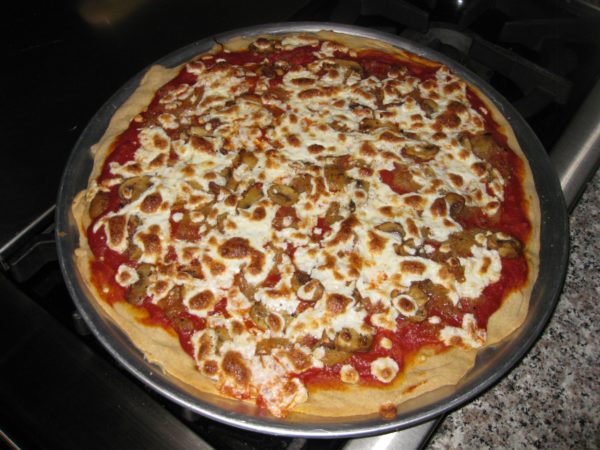
Copyright © 2017 by VillaSentieri.com. All rights reserved.

